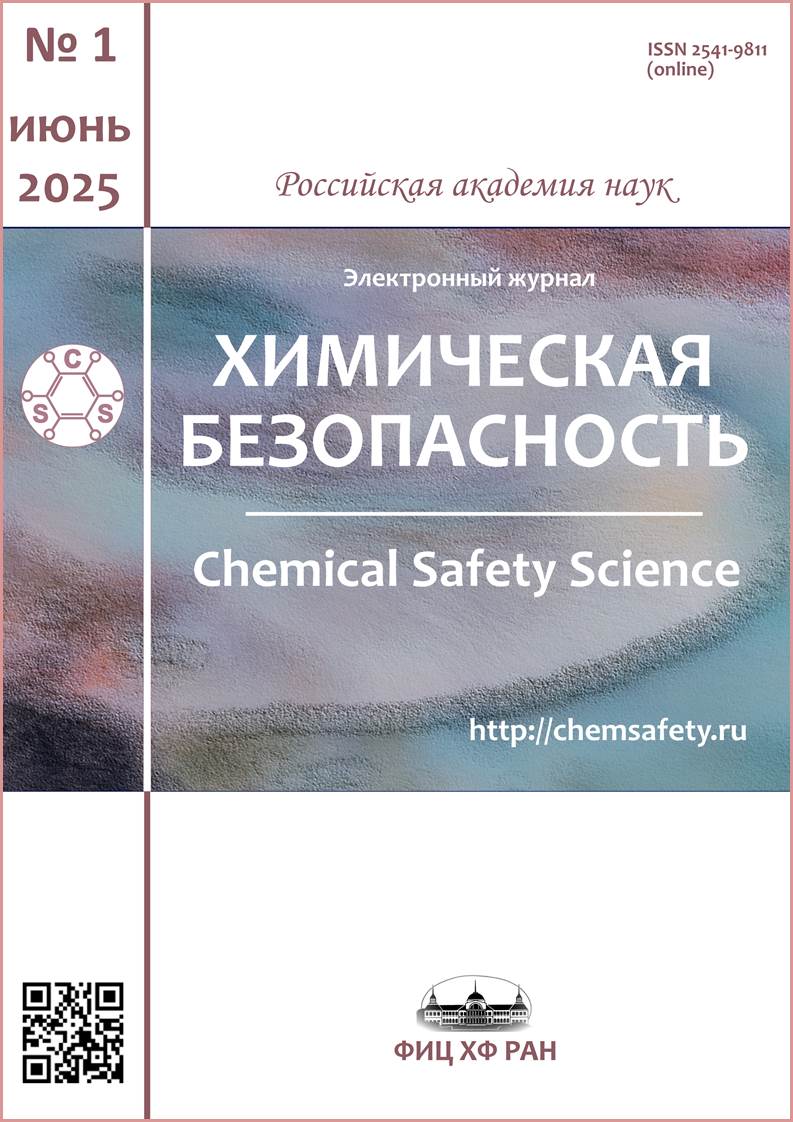Utilization of Brines Using Liquid Glass
Abstract
Highly concentrated salt solutions (brines) formed during mining, seawater desalination and industrial processes pose a serious environmental problem. Traditional disposal methods, such as discharge into water bodies or injection into underground formations, are expensive and environmentally unsafe. In this regard, the search for alternative methods of processing brines to obtain useful products is becoming relevant. The paper examines the possibility of utilizing brines using liquid glass (sodium and potassium silicates) and studying the properties of the resulting reaction products. Liquid glass solutions with different moduli were used for the experiments. The brine was passed through a layer of liquid glass, which led to the formation of gel-like flakes. The solid phase was separated from the liquid, after which its composition was analyzed using X-ray diffraction analysis (XRD), X-ray phase analysis and electron microscopy. The processes of hydrolysis, polymerization and formation of porous structures were also studied. It has been established that the interaction of liquid glass with brines results in the formation of poorly soluble silicate materials with a developed porous structure. These materials demonstrate high adsorption capacity with respect to NaCl ions and other impurities. It has been shown that the properties of the resulting products depend on the type of silicate (sodium or potassium), its concentration and reaction conditions. The resulting solid phases can be used in the construction industry. The study confirms the scientific novelty of the proposed method for the utilization of brines, which allows not only to reduce the environmental load, but also to obtain useful materials. The results of the work open up prospects for the practical application of silicate products formed as a result of brine treatment with liquid glass in industry.
References
Panagopoulos A. (2021). Beneficiation of saline effluents from seawater desalination plants: Fostering the zero liquid discharge (ZLD) approach - a techno-economic evaluation. Journal of Environmental Chemical Engineering. 9(4), 105338. https://doi.org/10.1016/j.jece.2021.105338.
Panagopoulos A. (2022). Brine management (saline water & wastewater effluents): Sustainable utilization and resource recovery strategy through Minimal and Zero Liquid Discharge (MLD & ZLD) desalination systems, Chemical Engineering and Processing - Process Intensification. 176, 108944. https://doi.org/10.1016/j.cep.2022.108944.
Mironov V.V., Ivanyushin Yu.A., Suglobov D.A., Mironov D.V., Kadyseva A.A., & Erofeev E.A. (2024). Hydraulic calculation of the pipeline with dispersed discharge of brine into the water. Architecture, construction, transport. 107(1), 68‒78. (in Russ.). https://doi.org/10.31660/2782-232X-2024-1-68-78.
Pat. 2133334, Russian Federation, 1999.
Drozdov A.V. (2013). Assessing possibility to pump open pit and mine “Udachny” drainage brines into Middle Cambrian aquiferous complex. iPolytech Journal, 7(78), 32‒40. (in Russ.). https://journals.istu.edu/vestnik_irgtu/journals/2013/07.
Raza A., Mahmoud M., Alafnan S., Arif M., Kirmani F.U.D., Kamal M.S., Mustafa M., & Rana A. (2024). Role of high-density brines in reservoir development stages: a review. Energy Geoscience. 5(3), 100304. https://doi.org/10.1016/j.engeos.2024.100304.
Luo X., Li X., Wei C., Deng Z., Liu Y., Li M., Zheng S, & Huang X. (2022). Recovery of NaCl and Na2SO4 from high salinity brine by purification and evaporation. Desalination. 530, 115631. https://doi.org/10.1016/j.desal.2022.115631.
Korneev V.V., & Danilov V.I. (1996). Soluble liguid glasses. SPb.: Stroiyizdat (in Russ.).
Iler R. (1979). The chemistry of silica: solubility, polymerization, colloid and surface properties and biochemistry of silica. Wiley, Chichester.
Rakhmanin Yu.A., Egorova N.A., Mikhailova R.I., Ryzhova I.N., & Kochetkova M.G. On the hygienic rating of silicon compounds in drinking water (literature review). Hygiene and Sanitation. 100(10), 1077‒1083. (in Russ.). https://doi.org/10.47470/0016-9900-2021-100-10-1077-1083.
Shabanova N.A., & Sarkisov P.D. (2004). Fundamentals of sol-gel technology of nanodispersed silica. M.: Akademkniga (in Russ.).
Prokof'ev V.Yu., Razgovorov P.B., Smirnov K.V., Shushkina E.A., & Il'In A.P. (2007). Extrusion molding of kaolin sorbents. Glass and Ceramics. 64(7‒8), 287‒290. https://doi.org/10.1007/s10717-007-0072-x.
Hong S.K., Voon. M.Y., & Hwang H.J. (2011). Fabrication of Spherical Silica Aerogel Granules from Water Glass by Ambient Pressure Drying. Journal of the American Ceramic Society. 94(10), 3198‒3201. https://doi.org/10.1111/j.1551-2916.2011.04765.x.
Inoue S., Morita K., Asai K., & Okamoto H. (2004). Preparation and properties of elastic polyimide-silica composites using silanol sol from water glass. Journal of Applied Polymer Science. 92(4), 2211‒2219. https://doi.org/10.1002/app.20239.
Figovsky O.L., & Kudryavtsev P.G. (2014). Liquid glass and aqueous solutions of silicates, as a promising basis for technological processes of new nanocomposite materials. Engineering journal of Don. 29(2), 117. (in Russ.). http://www.ivdon.ru/ru/magazine/archive/n2y2014/2448.
Ramazanov A.Sh., Ataev D.R., & Kasparova M.A. (2021). Obtaining high quality lithium carbonate from natural lithium-containing brines. ChemChemTech. 64(4), 52‒58. (in Russ.) https://doi.org/10.6060/ivkkt.20216404.6238.
Usova N.T., Lotov V.A., & Lukashevich O.D. (2013). Waterproof autoclaveless silicate building materials on the basis of sand, soluble glass compositions and mud of water purifications. Vestnik of Tomsk state university of architecture and building. 2, 276‒284. (in Russ).
Copyright (c) 2025 Victor V. Mironov, Ludmila A. Pimneva, Yuriy A. Ivanyushin, Nikita O. Azarapin, and Ekaterina D. Mironova

This work is licensed under a Creative Commons Attribution-NonCommercial 4.0 International License.












